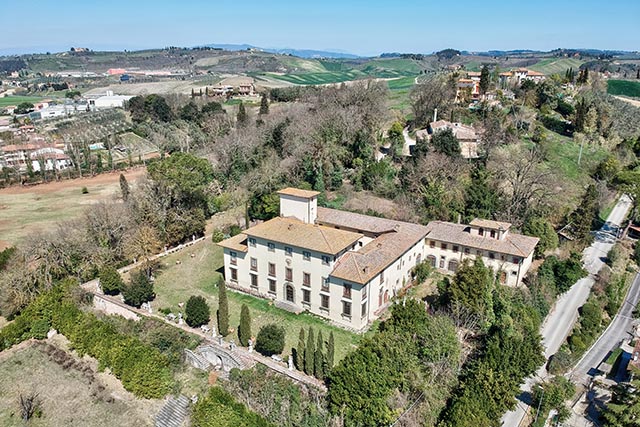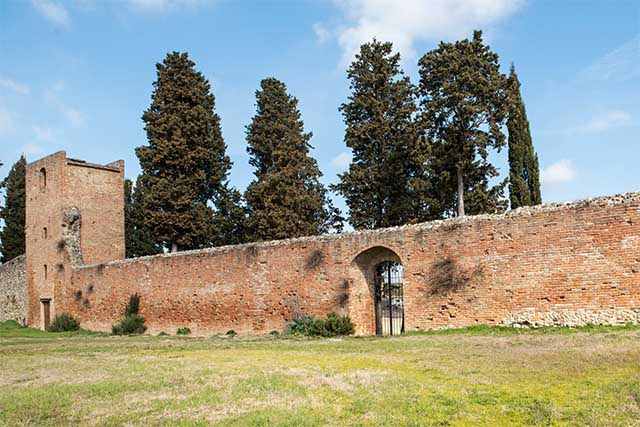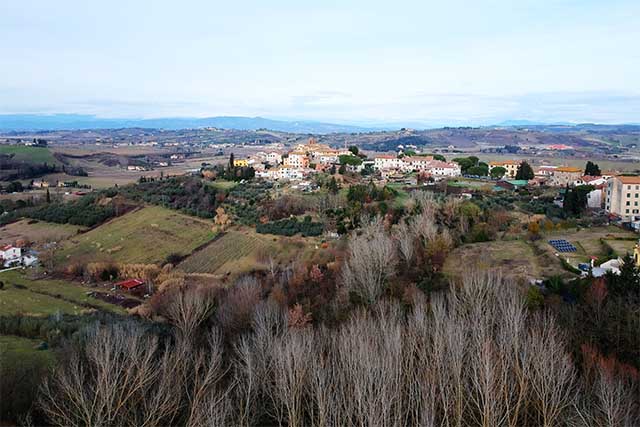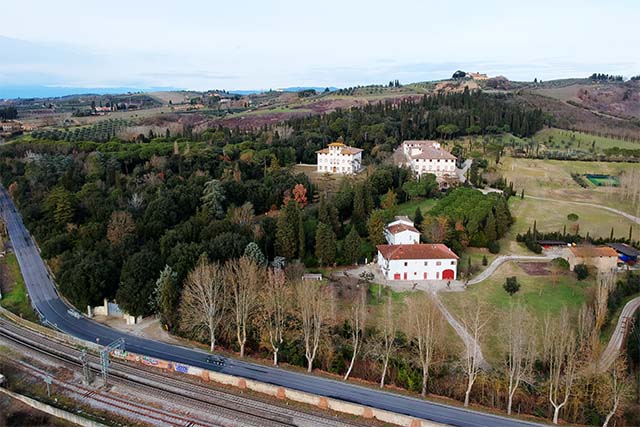Municipality of Castelfiorentino
The small turreted village, drawn by Leonardo with the indication of Camiano for the name, must be identified as the ancient castle that must have occupied the upper slopes of the hillsides that today are the site of the Villa Pucci in the hamlet of Cambiano, in the municipality of Castelfiorentino. The castle of the Valdelsa, originally belonging to the Counts Cadolingi of Fucecchio, maintained the appearance that it took on in the Late Middle Ages, up until the age of Leonardo. Today nothing remains of the castle other than the church of San Prospero, visible, even if in its later forms, in the garden of the Villa Pucci. Originally it must have had a plan with three naves and a porch on the facade.
The ancient castle of the Counts Alberti appears on Leonardo’s famous map of the Valdelsa RL 12278 (Windsor Castle collection). During his time, the large fortified village appeared still in the form it had reached during the 14th century, at the point of its maximum expansion. A noteworthy portion remaining from the walls with their wall towers as depicted by Leonardo is preserved and visible today on the upper part of Castelforentino. From the populous Valdarno village originated the illuminator Vante of the Attavanti, whom Leonardo had probably met during the years while they were both attending Verrocchio’s workshop.
The village of Castelnuovo preserves the structure of the late medieval castle that was strategically located on the border of the Elsa, and that passed under control of Florence only after, at the end of the 14th century, the city’s defensive structures had been compromised. The castle, divided into an upper part, at higher elevation, and an underlying village, was surrounded by walls punctuated by wall towers, probably built in brick. This is the aspect with which Leonardo represented the small town of the Valdelsa, proposed by the artist in the form of a small turreted castle.
The ancient Guidi castle of Granaiolo (12th century), strategically located on the border of the Elsa, became the object of strong attention by the city of Florence. Most of the information about the form of the castle drawn by Leonardo comes from written sources: in the 15th century it was surrounded by a defensive wall, while some houses were constructed of raw earth. The rapid degradation of these structures must have contributed to the cancellation of the castle, of whose toponym the trace remains today in the title of the Villa Pucci chapel, which preserves the memory of the castle church, Santa Maria al borgo vecchio (in the old village).








